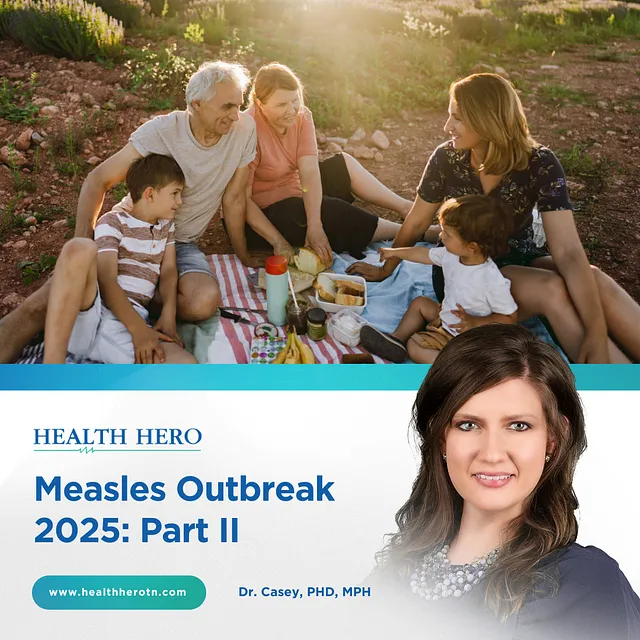Community Immunity is a public health concept that helps play a role in preventing and controlling the spread of diseases within a population. Community Immunity, also known as herd immunity, refers to a level of protection within a population that is sufficient to stop the transmission of a contagious disease, providing protection to individuals who may not be immune.
Understanding What Community Immunity Is
To achieve community immunity a significant proportion of the population becomes immune to a particular infection. This can happen through natural infection or vaccination. Once this immunity is achieved it can act as a barrier that will help to reduce the likelihood of a disease spreading within the community. Once there are enough people immune, it can protect those who are vulnerable or unable to get vaccinated, such as infants, elderly individuals, or those with certain medical conditions.
The level of immunity needed to achieve community immunity depends on the infectious agent. The more contagious a disease the greater number of people needed to be immune to stop the spread. This is determined by the basic reproduction number, which is defined as the average number of new infections caused by a single infectious individual in a completely susceptible population. The threshold for herd immunity is reached once enough people are immune to a disease, making it unlikely to spread.
Natural immunity or Vaccination. What’s the difference
Natural immunity results from an individual contracting and recovering from a disease. This process kickstarts the body’s immune response and leads to the production of antibodies for long-term protection. Vaccination uses a weakened or inactivated form of specific components to stimulate an immune response without needing to expose the body to the full disease.
The safest method of developing herd immunity is with vaccinations. Getting a vaccine offers a more controlled approach to achieving community immunity because it avoids complications associated with natural infection.
Vaccination against the flu not only protects the individual but also the community at large, indirectly protecting those who cannot be vaccinated, like young children or individuals with certain medical conditions. It’s important to note that for flu, unlike diseases such as measles, rubella, and polio, not all vaccinated persons are completely protected due to the aforementioned variable vaccine effectiveness. Therefore, community-wide high vaccination coverage is essential to protect vulnerable populations by halting the transmission of the flu virus. (www.nfid.org)
The Importance of Community Immunity
There are many benefits to achieving herd immunity, including protecting those who are most vulnerable. Community immunity offers protection to those who can’t be vaccinated yet or those who are more susceptible to serious complications. Infants and others who are too young can’t receive vaccines, so having herd immunity helps to create a barrier of protection for them. This also provides protection for those who have certain medical conditions that contraindicate, and those with compromised immune systems.
Having a whole community protected also helps prevent and control outbreaks of infectious diseases. When a significant portion of the population is immune, the likelihood of an infected individual coming into contact with a susceptible individual decreases, reducing the potential for widespread transmission.

Challenges In Achieving Community Immunity
For a population to attain community immunity, a high percentage of the population needs to be vaccinated. Not being vaccinated leaves pockets of susceptibility, allowing for outbreaks to occur. Tennessee actively addresses this by prioritizing accessible and affordable healthcare through initiatives like the Get Your Shot campaign. These campaigns are vital to helping the community obtain herd immunity and protect communities by reducing the spread of influenza through increased vaccination coverage.
The duration of Immunity can differ whether it was acquired through natural infection or vaccination. Some vaccines provide lifelong immunity, while others may require booster shots to maintain protection. Monitoring and addressing this is another essential aspect of maintaining community immunity.
What Examples Are There of Effective Herd Immunity
The scientific community has seen several examples of global efforts of community immunity that have eliminated diseases. Through widespread vaccination campaigns, the world has been able to significantly decrease polio cases. Vaccine hesitancy has unfortunately prevented some regions from completely eradicating the disease.
Measles and mumps are another highly contagious disease with the ability to spread through a population quickly. Recent outbreaks in parts of the world have highlighted the importance of getting vaccinated and maintaining high coverage so there is no resurgence.
Addressing Vaccine Hesitancy
To be able to achieve community immunity, it’s important to address vaccine hesitancy. Tennessee provides accurate information about the safety and efficacy of vaccines, as well as dispel any myths or misinformation that’s preventing people from trusting vaccines.
Tennessee continues to engage with communities to understand any concerns and help address specific issues that can lead to vaccine acceptance. Tennessee also ensures easy access to vaccination services such as mobile vaccination clinics and outreach programs.
Overall, community immunity is a powerful tool in the fight against infectious diseases. It offers protection to individuals and communities, especially to those unable to get vaccinated. Achieving and maintaining high levels of immunity requires multiple steps that include vaccination, public health education, and addressing barriers to vaccine access. Through a commitment to ensuring vaccine equity, we can work towards a world where the threat of certain infectious diseases is significantly reduced, if not eliminated altogether.
. . .
Sources


